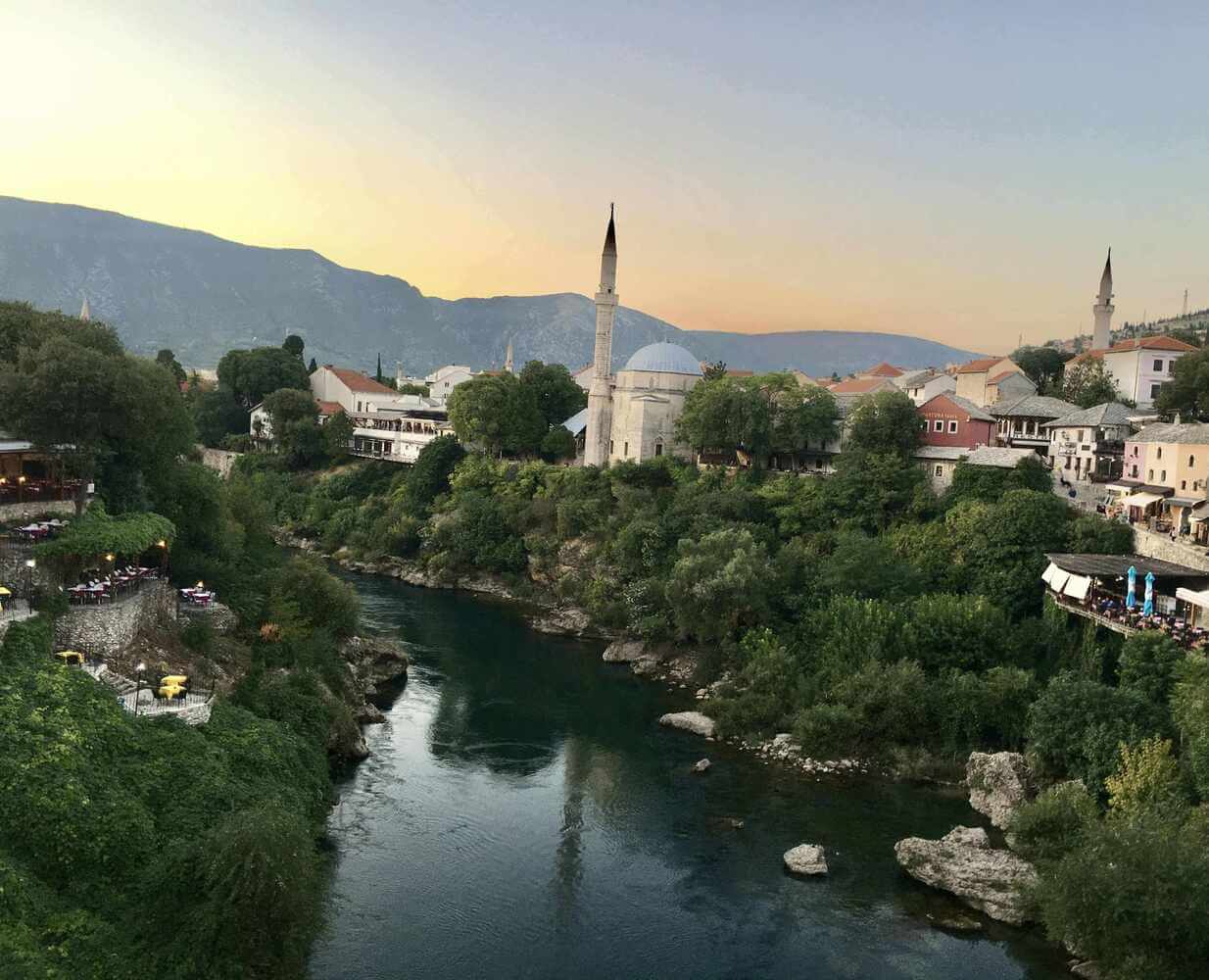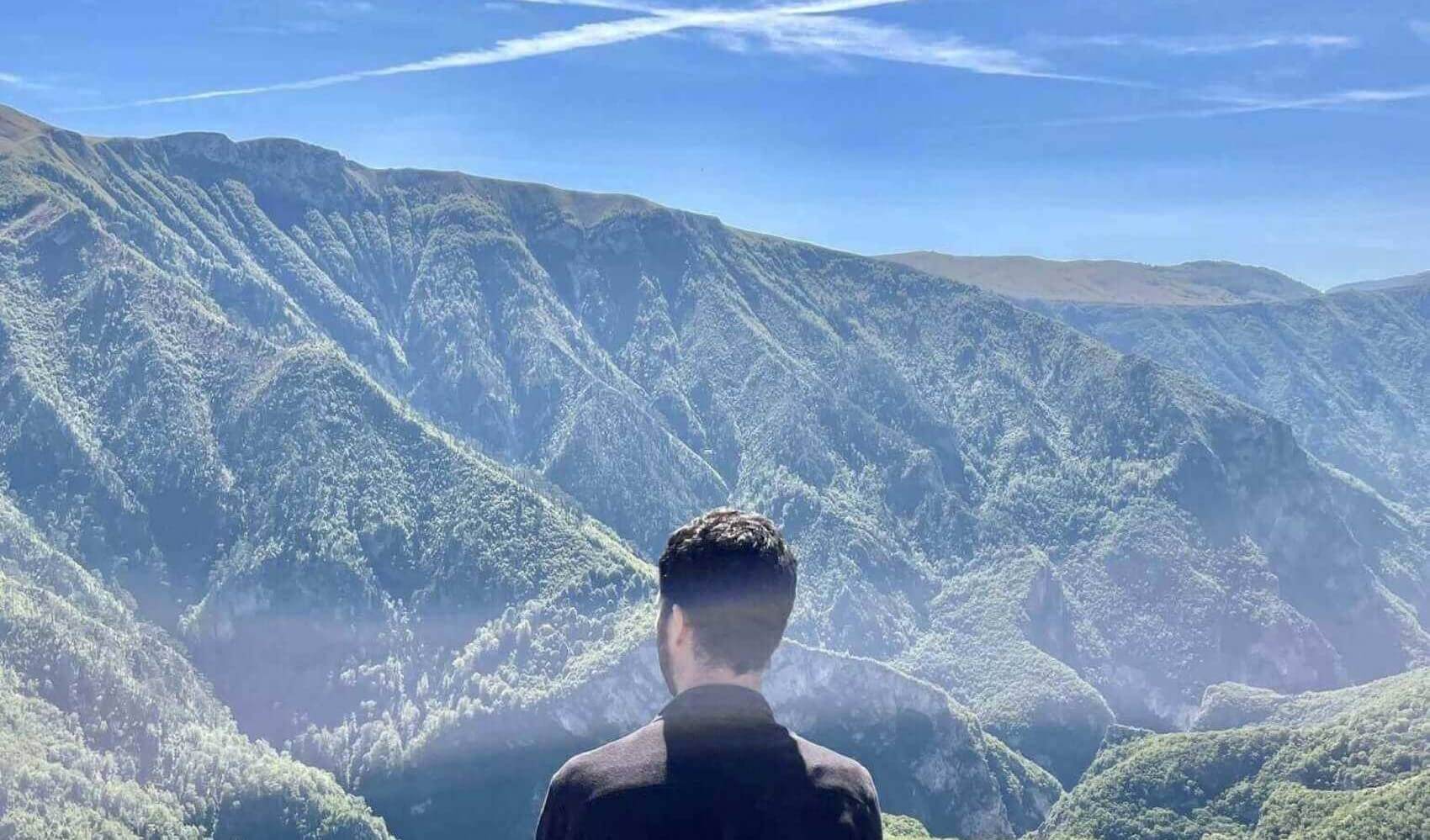
I visited Bosnia & Herzegovina in September 2021, spending ten days with a Bosnian friend from my master’s program. We started in his hometown of Gracanica , then did a road trip to Sarajevo and Mostar. Given that B&H is a Muslim-majority country, I expected that alcohol consumption would be rare. It turns out, however, that Bosnians can give the British a run for their money when it comes to drinking. I was astonished at how welcoming people were, with my friend’s acquaintances freely including me in their conversations. Given that I do not speak Bosnian, my intellectual contributions were dwarfed by my enthusiastic hand signals and head-nodding. The sense of comradery among the locals was remarkable. For example, Bosnians like to speed when driving and, to avoid getting caught, cars flash their lights to warn the oncoming traffic about police speed checks.
Sarajevo is B&H’s capital city. Austria-Hungary occupied Sarajevo and the rest of B&H in 1878, and helped the nation develop rapidly by installing a tramway system that is still in place today. Technically speaking, Sarajevo is the city that sparked World War I, since it was here that Gavrilo Princip infamously assassinated the Austro-Hungarian Archduke Franz Ferdinand. B&H became part of Yugoslavia until the 1990s (excepting 1941-1945, when it was ruled by the Independent State of Croatia). Sarajevo hosted the Winter Olympics in 1984, which helped it develop its modern infrastructure. During the Bosnian War, it was besieged by Serb forces for almost 4 years – the longest siege in modern times.
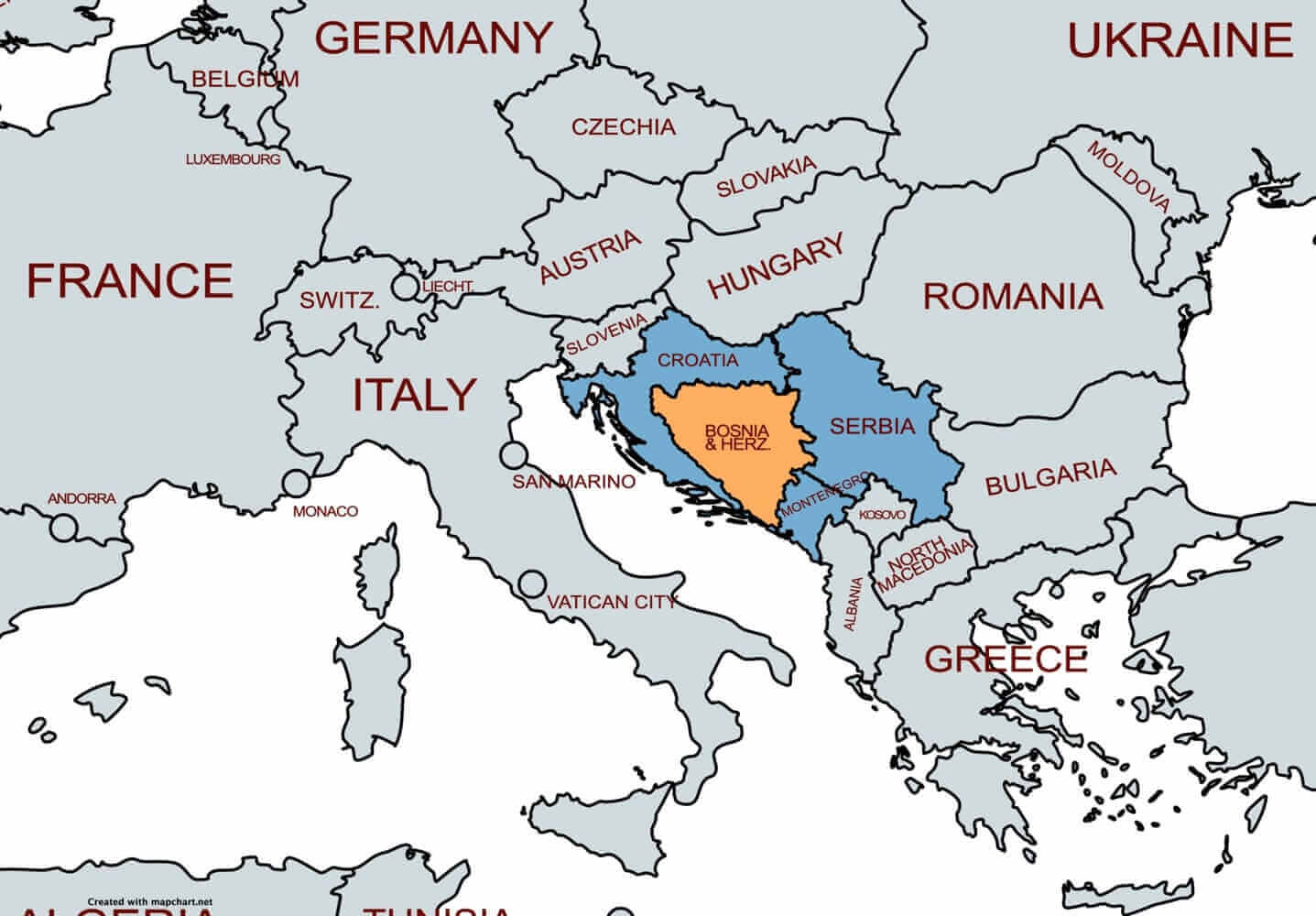
B&H is a multi-ethnic country where religion is tied to ethnicity. Around 50% of people are Bosniak Muslims, 31% are Orthodox Serbs, and 15% are Catholic Croats. It was part of Yugoslavia throughout the Cold War, and the three groups lived in relative harmony under Tito’s leadership, until the nation’s breakup. In 1992, B&H voted for independence in a referendum, and its Serbian minority feared that it would lose political power. A conflict emerged where the Serbs (supported by Yugoslavia) fought against the Bosniaks and the Croats (supported by Croatia). The latter two groups began fighting each other as well, leading to a savage 3-way conflict. The Bosniaks and Croats united again against the Serbs towards the end of the war. Genocidal actions committed by the Serbs against the Bosnians attracted the attention which intervened by bombing Serb forces and enforcing no-fly zones.
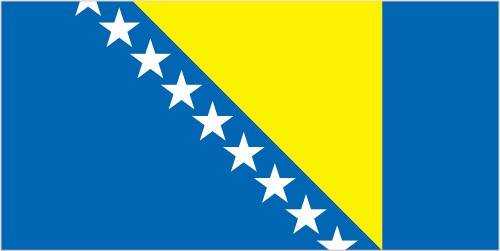
I found B&H’s convoluted political system harder to grasp than quantum physics. Ever since the Dayton Peace Agreement of 1995, the nation of B&H has been organized into two entities, each controlling half the country’s area.
In addition, the small (85,000 people) Brcko district is formally controlled by both entities, but in practice operates independently, and splits the Republic Srpska in two. The Bosniak, Croat, and Serbian communities each elect a president for a 4-year term, who rule together as a triumvirate. Because each one has veto power, it is very hard to pass legislation that significantly alters the status quo. B&H has two legislative houses, both of which reserve 1/3 of seats for each ethnic group. I was astonished to learn that the multinational Peace Implementation Council chooses a (foreign) High Representative for B&H. This representative has extensive power over Bosnian politics and can even remove elected officials from office.
Sarajevo’s Eternal Flame commemorates B&H’s victims from World War II. The Kingdom of Yugoslavia was invaded by the Axis powers in 1941. Germany, Italy, Hungary, and Bulgaria each annexed parts of the country, and the rest was controlled by the fascist Independent State of Croatia. Genocidal Ustace Croatian militias killed thousands of Serbs, Jews, and Romani. Over 300,000 Serbs were executed, representing 15% of the nation’s Serbian population. Curiously, the Ustase considered Bosniak Muslims to be ethnically Aryans and therefore treated them like Croats.
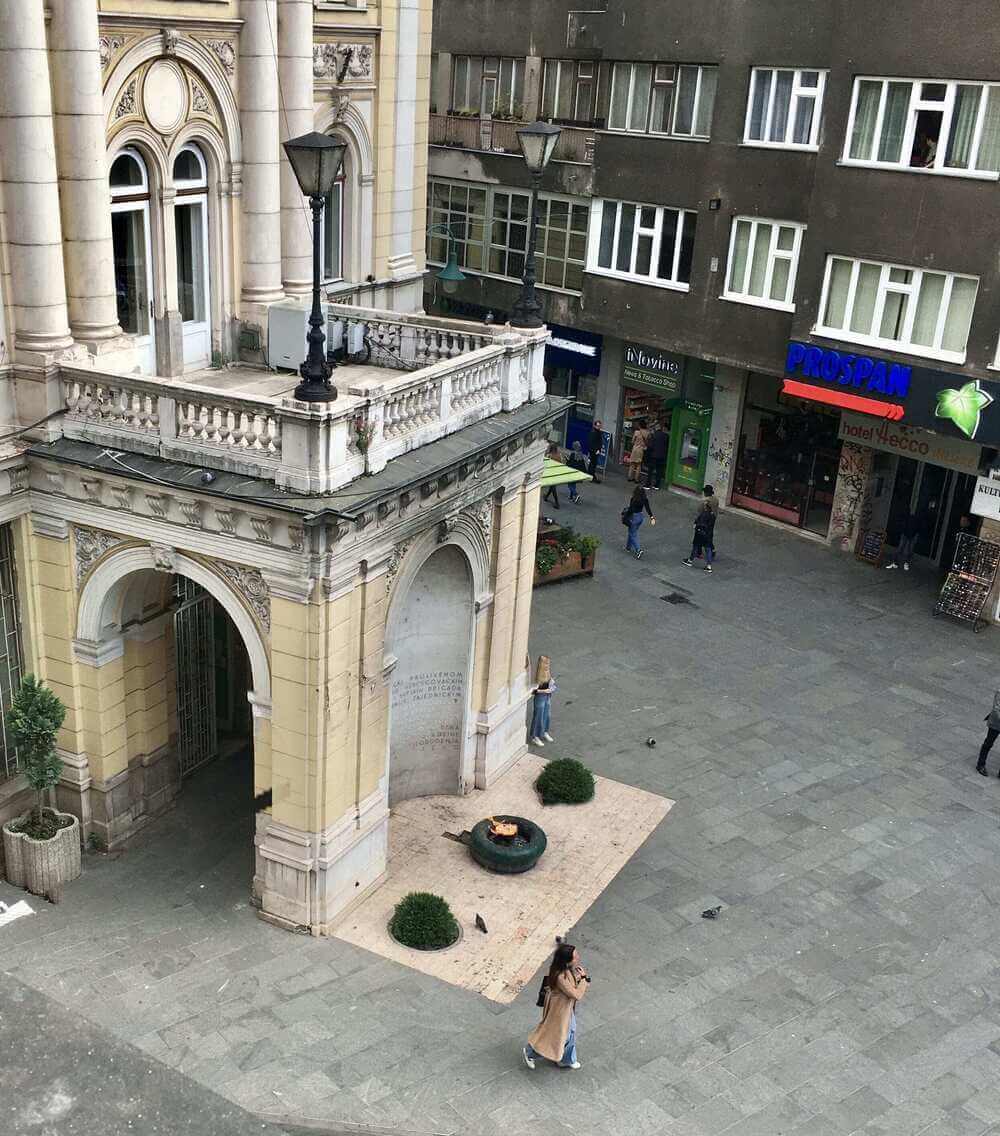
The Stari Most is an iconic bridge in Mostar that was built by the Ottoman Empire in the 16th century. The Bosnian Croat army destroyed it during the Bosnian War when they were fighting against the Bosniaks, who were using it to supply their troops. Since it was rebuilt, it has been designated a UNESCO World Heritage site. Mostar is in B&H’s Croat Herzegovina region, though it has a significant Bosniak population as well. It is also a tourist hotspot and is saturated with lively street vendors.
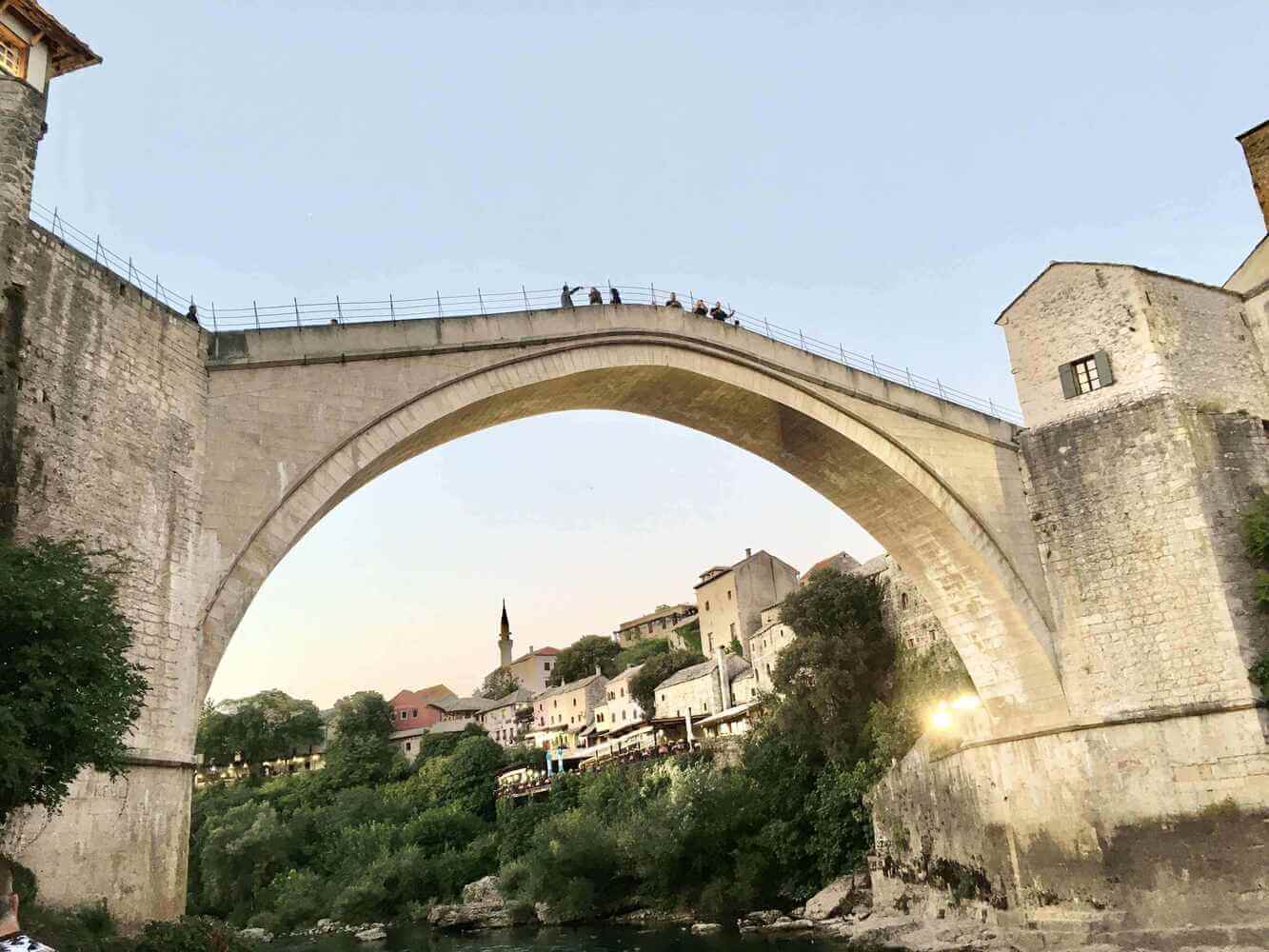
In this picture of Mostar, you can see the Neretva River, along with two mosques. Islam has been an important influence in Bosnia since it was a province of the Ottoman Empire from 1463 until 1878. To this day, Bosnia retains strong ties with Turkey. As you may notice from the hills in the distance, Bosnia is a rugged and mountainous country with many forests. Although this results in many excellent hiking trails, it also means that the country’s highways are very winding, so it takes ages to travel anywhere by road.
